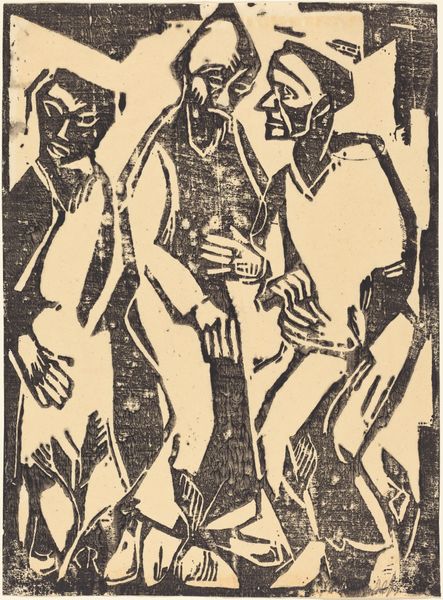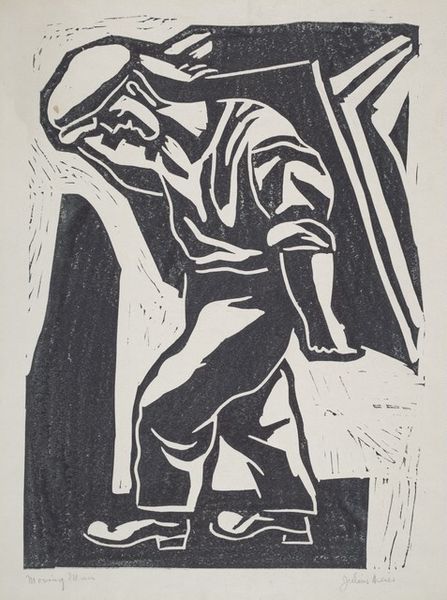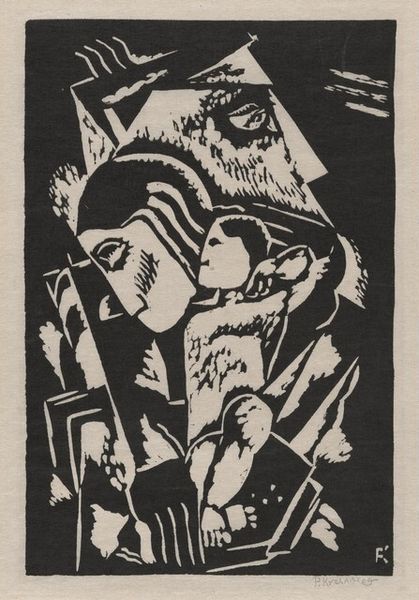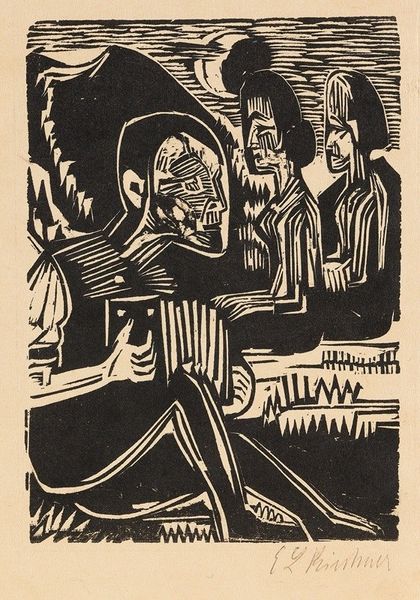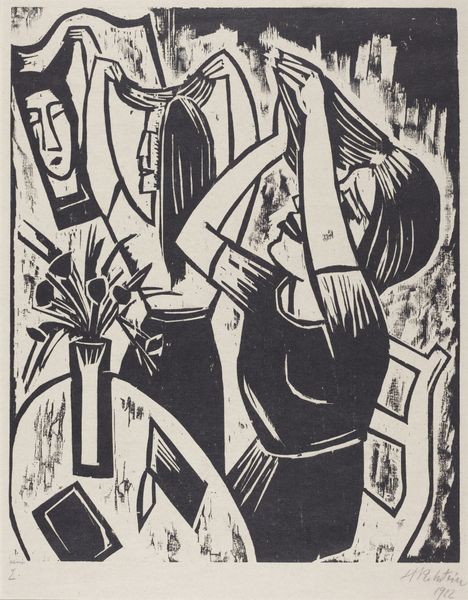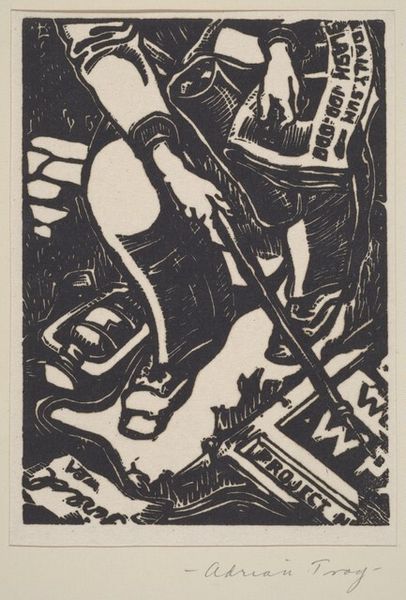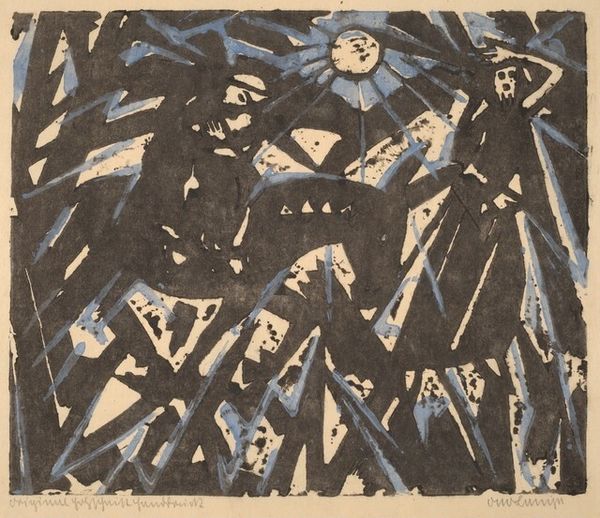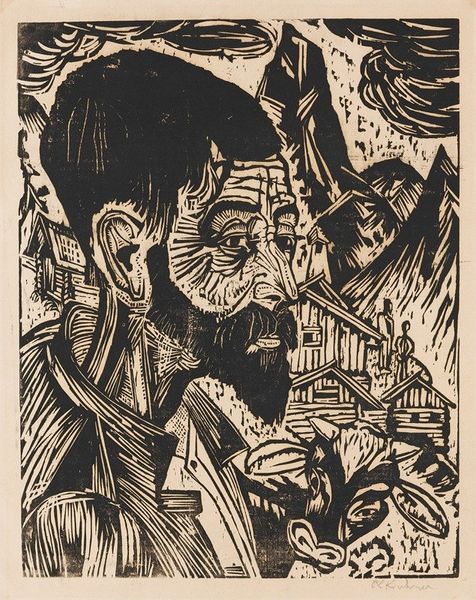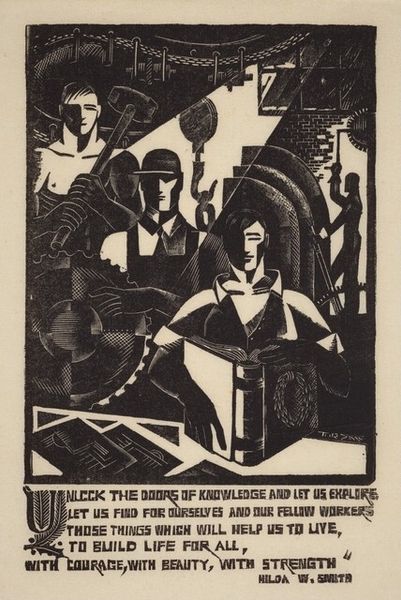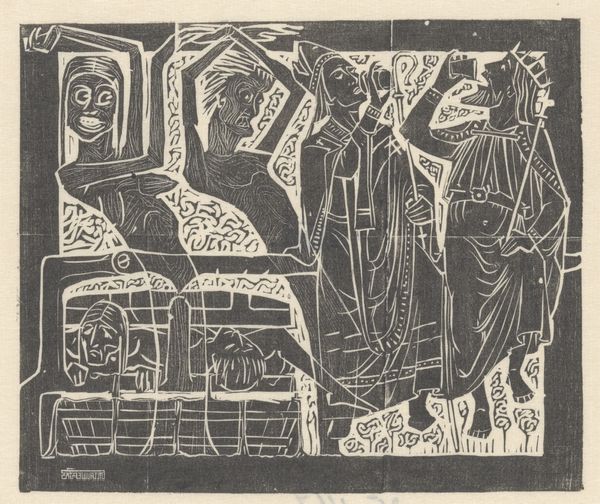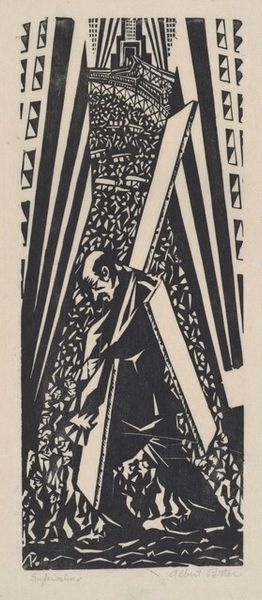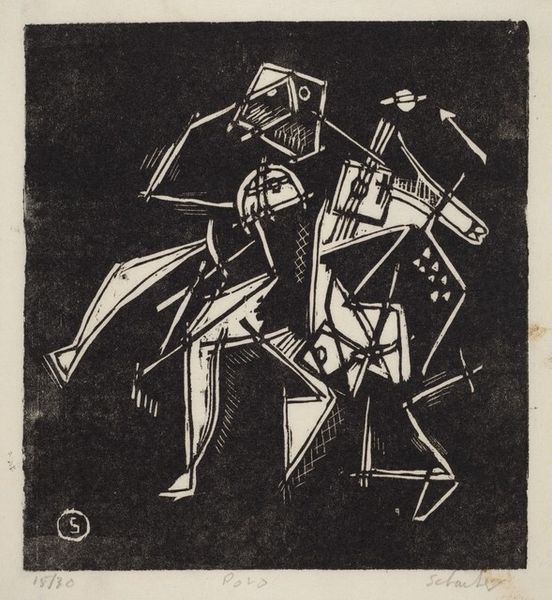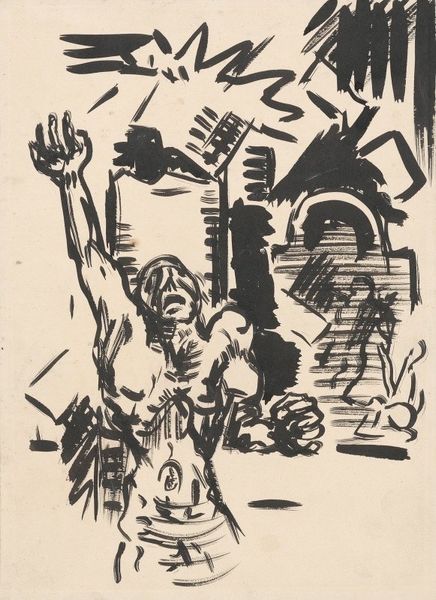
Copyright: National Gallery of Art: CC0 1.0
Curator: This woodcut print, believed to be created around 1938 by Eva D. Teitelbaum, is entitled "Untitled (Carrying Stretcher)". It's a powerful scene, starkly rendered in monochrome. Editor: My first impression is of a collective grief, almost biblical in its scale. The black and white amplifies the rawness; the absence of color makes it feel stripped down to essential emotion. Curator: Indeed. Woodcut, as a medium, has a historical association with conveying messages to the masses, often sociopolitical. Given its creation date, do you find any clues of impending socio-political disaster or hints of persecution? Editor: Absolutely. Looking at it through a contemporary lens, I can’t help but see it as a reflection of the pervasive anxiety surrounding the rise of fascism in Europe. These figures carrying a body...it evokes a profound sense of loss but also resistance. Who are they carrying, what does this mean? Curator: I read it slightly differently. The figures evoke, for me, archetypal forms—anonymous bearers of suffering that resonates across time, as much historical as it is current, while remaining relevant into the future. Perhaps universal archetypes, not specific events. Editor: Interesting that you call them archetypal; I see the specificity in their shared burden of an era filled with mass persecution and systematic dispossession. Curator: Consider the visual vocabulary—the dark voids around the figures amplify their isolation, their disconnection from a comforting world. The act of carrying—a deeply human action made haunting by Teitelbaum's use of light and shadow. This reminds me of earlier iconography where certain forms, and especially expressions, were meant to elicit immediate emotion and cultural recognition, from piety to lamentation. Editor: Yes, the medium is effective. But their expressions…that is where the true potential of this artwork lies. Each is a political symbol, whether it be for the collective grief and exhaustion faced by everyday people threatened with social-political chaos, or perhaps for their struggle for communal strength amid these threats. What do you think? Curator: The expressions certainly guide the emotional narrative, although they become powerful *because* of, rather than *despite* being representative forms, carrying our individual burdens of cultural memory, fear, or empathy into the image and back out to others, long after Teitelbaum put her blade to the block. Editor: Agreed, it’s a potent testament.
Comments
No comments
Be the first to comment and join the conversation on the ultimate creative platform.
